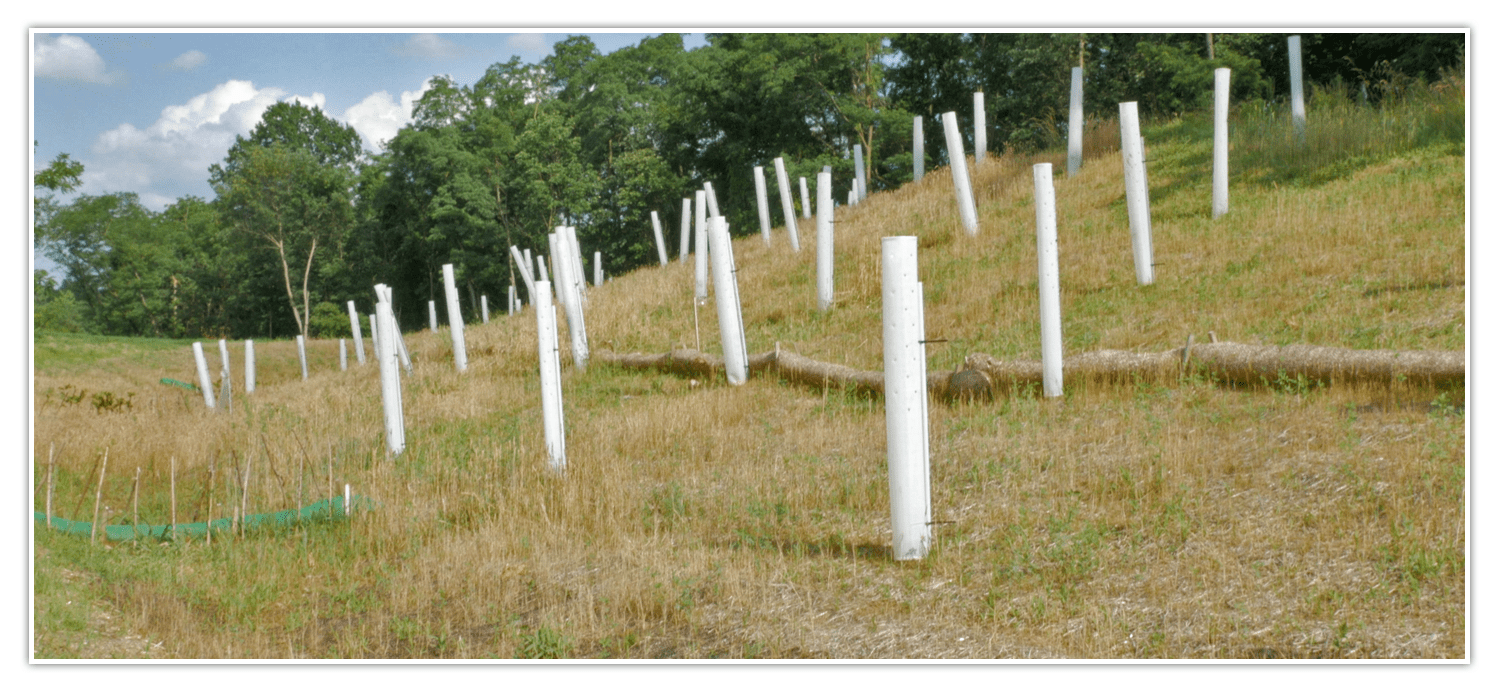Temporary stabilization techniques are critical to prevent sediment loading to local water bodies and/or sensitive natural areas cause by construction activities, especially where trails and boardwalks are crossing wetlands, streams or other sensitive natural areas.
Temporary stabilization measures are placed prior to soil disturbance and stay in place during construction and, depending on the method, may remain in place until permanent stabilization measures are established. Temporary measures include sediment transport controls such as silt fence or filter sock, barrier protection to keep equipment within limits of disturbance such as orange barrier fence and other methods appropriate to site conditions.
- Temporary stabilization strategies include the following:
- Disturbance of wetlands or streams is to be minimized as much as possible.
- Any disturbance of wetlands or streams will likely require permitting and mitigation (see local and federal regulatory guidelines).
- Water movement is typically slow in wetlands minimizing the potential for scour, however temporary or permanent erosion control may be necessary.
- Minimize disturbance of natural features by limiting grading into wetland, streambanks or streams as much as possible.
- Protect wetlands or streams during construction from sediment dispersal due to land disturbance.
- Protect wetlands or streams from construction access by route placement and protections such as timber mat.
- Temporary erosion controls include the installation and maintenance of filter sock, silt fence or other control that spans the entire length of the wetland, stream, or disturbed slope adjacent to the trail or boardwalk.
- Temporary controls to include placing some barrier such as orange barrier fence around the wetland or stream to keep trucks or equipment out the undisturbed wetland, streambank or stream areas during construction.
- Trail segments adjacent to sensitive natural areas
- Boardwalks crossing or adjacent to wetlands, streams or other sensitive habitat.
- Boardwalks used to minimize horizontal and longitudinal slopes of the trail.

Steep slopes temporarily planted with vegetation helps keep soil in place during construction, preventing sediment from eroding into nearby water bodies.
